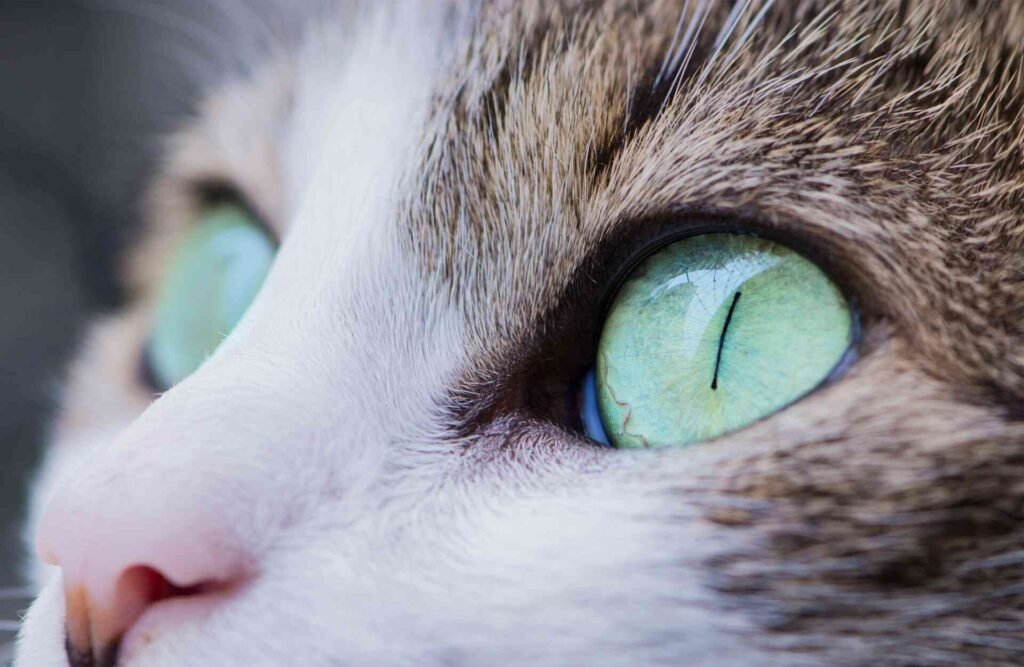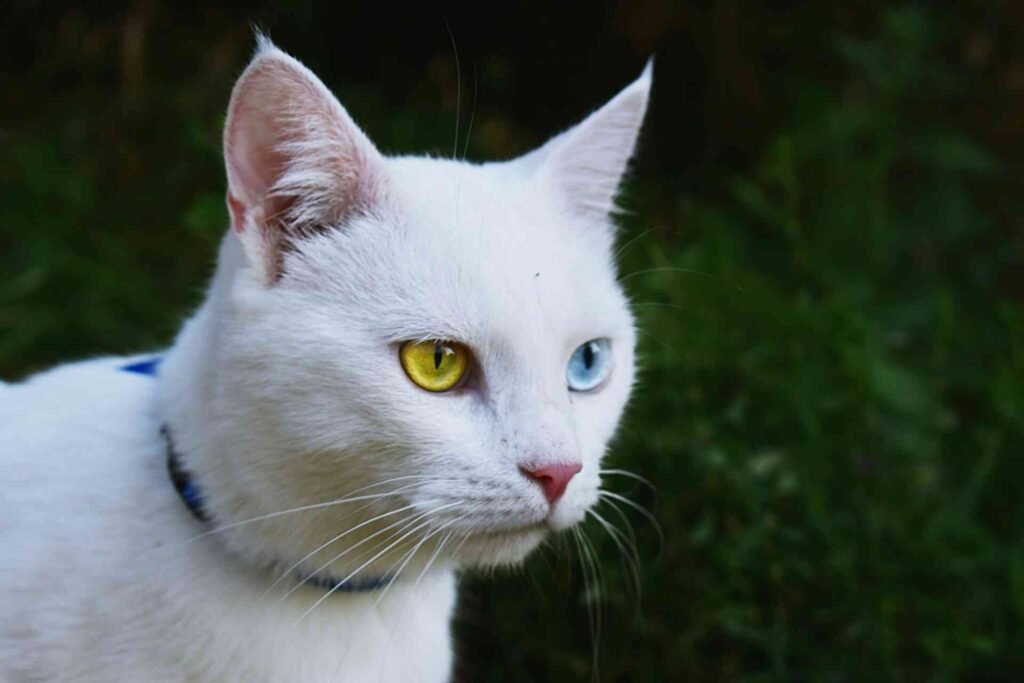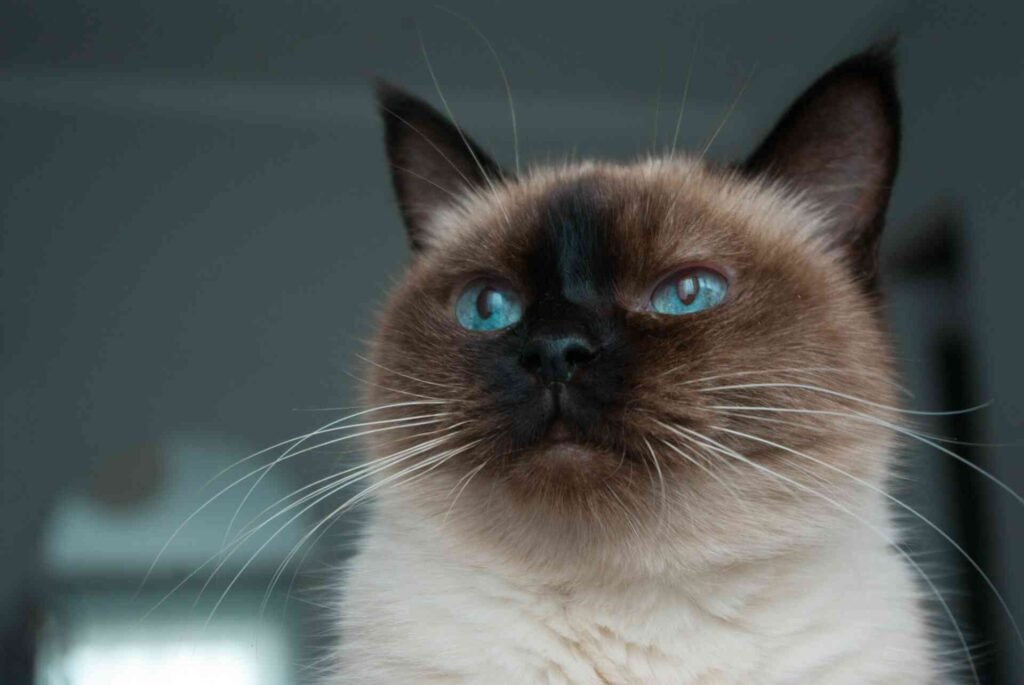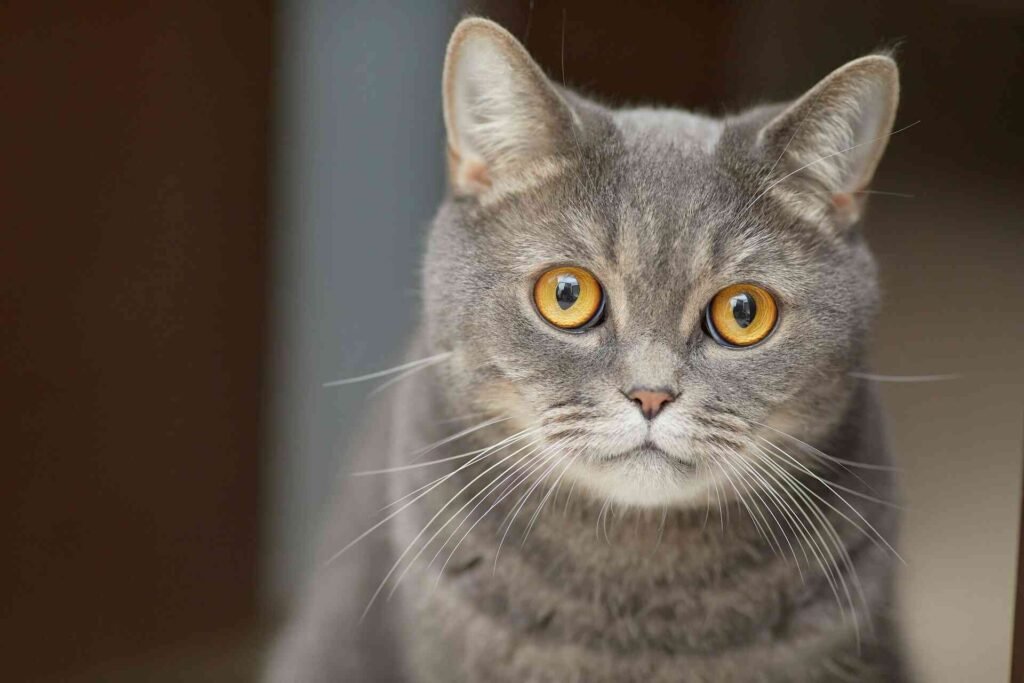Have you ever gazed into your kitten’s eyes and wondered when they’ll develop their permanent color? Or perhaps you’ve noticed subtle changes in your adult cat’s eye shade and questioned whether this is normal? The evolution of cat eye color is a fascinating process that captivates many pet parents. In this comprehensive guide, we’ll explore when and why cats’ eyes change color, what’s normal versus concerning, and everything else you need to know about your feline friend’s mesmerizing gaze.

The Mystery Behind Kitten Eye Color Development
All kittens are born with blue eyes, regardless of what their adult eye color will eventually become. This beautiful blue hue isn’t actually a true pigment but rather the result of light reflecting off the structure of their developing eyes. When kittens first open their eyes at about 7-10 days old, you’ll notice this striking blue color that can range from a pale sky blue to a deeper azure.
But when do kittens’ eyes change color? The transformation typically begins around 3-4 weeks of age, when melanin (the same pigment responsible for skin and fur color) starts to develop in the iris. The eye color change process is gradual and usually completes by the time your kitten reaches 3-4 months of age. During this transition period, you might notice your kitten’s eyes going through various intermediate shades before settling on their permanent color.
The timeline for a cat’s eye color change can vary based on genetics and individual development. Some kittens may experience a complete color transformation by 7 weeks, while others might take up to 12 weeks or slightly longer. This variation is perfectly normal and provides pet parents with the joy of watching their little one’s unique traits develop day by day.
The Spectrum of Adult Cat Eye Colors
The final eye color your cat develops depends largely on genetics. The melanin concentration in the iris determines the ultimate shade, with higher concentrations resulting in deeper, more intense colors. Adult cats typically have eye colors that fall within this spectrum:
- Gold/Amber: Perhaps the most common eye color in domestic cats, ranging from pale yellow to deep amber
- Green: Varying from pale sage to deep emerald
- Blue: Some cats retain their blue eyes into adulthood, particularly certain breeds like Siamese and Ragdolls
- Copper: A rich, warm reddish-brown shade
- Orange: Bright, vibrant orange tones
- Odd-eyed: Some cats have heterochromia, where each eye is a different color, often one blue and one gold or green

Interestingly, certain cat breeds are known for specific eye colors. For example, Russian Blues typically develop emerald green eyes, while many Persian cats sport deep copper eyes. The Siamese breed is famous for their striking blue eyes that complement their distinctive coat patterns.
Can Cats’ Eyes Change Color Later in Life?
A common questions from pet parents is whether cats’ eyes can change color after they’ve reached adulthood. While dramatic color changes are rare after the initial kitten development period, subtle shifts in eye color can occur throughout a cat’s life.
Do cats’ eyes change color as they get older? Yes, but usually in very subtle ways. As cats age, their eye color might appear to deepen or fade slightly due to normal aging processes. This is similar to how human eye color can appear to change slightly with age. These changes are typically gradual and might be so subtle that you only notice when comparing photographs from different years.
Several factors can influence these subtle changes in adult cat eye color:
Health Factors That May Affect Eye Color
Certain health conditions can cause temporary or permanent changes to your cat’s eye color or appearance:
- Inflammation: Conditions like uveitis (inflammation of the eye’s middle layer) can temporarily alter eye color
- Cataracts: These can create a cloudy appearance that masks the true eye color
- Glaucoma: Increased pressure within the eye can cause color changes along with other symptoms
- Anisocoria: Different-sized pupils can make the eyes appear to be different colors
- Iris melanosis: A condition where pigmented spots develop on the iris
If you notice a sudden or dramatic change in your cat’s eye color, particularly if accompanied by other symptoms like squinting, tearing, or behavioral changes, it’s important to consult your veterinarian promptly.
Environmental Influences on Perceived Eye Color
Sometimes what appears to be a cat eye color change is actually an optical illusion created by:
- Lighting conditions: Your cat’s eyes may appear to shift between shades depending on natural vs. artificial light
- Pupil dilation: When pupils constrict or dilate, they reveal different amounts of the colored iris
- Surrounding colors: The colors in your cat’s environment, including their fur color, can influence how we perceive their eye color
These environmental factors explain why your cat’s eyes might look different in various photographs or under different lighting conditions.
The Special Case of Siamese and Color Point Cats
Color point cats like Siamese, Ragdolls, and Himalayans deserve special mention when discussing cat eye color change. These breeds possess a temperature-sensitive enzyme that affects pigment production. This unique characteristic not only creates their distinctive coat patterns but can also influence their eye color over time.

Siamese kittens are born with blue eyes, like all kittens, but unlike most other breeds, they retain this striking blue hue into adulthood. However, the intensity of the blue may shift somewhat as they age, often becoming deeper or more vibrant. This is connected to the same temperature-sensitive pigmentation that gives these cats their distinctive pointed coats.
For pet parents of Siamese and other color point cats, understanding this genetic trait can help explain the subtle eye color variations you might observe throughout your cat’s life. These changes are typically normal and reflect the fascinating genetic makeup of these special breeds.
Unusual Eye Color Changes: When to Be Concerned
While some eye color changes are part of normal development or aging, others may signal health issues that require attention. Being able to distinguish between normal variations and potential problems is an important aspect of responsible cat care.
Red Flags That Warrant a Veterinary Visit
Contact your veterinarian if you notice any of these changes in your cat’s eyes:
- Sudden or dramatic color changes in one or both eyes
- Different-sized pupils (anisocoria)
- Cloudiness or opacity developing in the eyes
- Visible third eyelid (nictitating membrane) showing more than usual
- Redness or inflammation of the eye or surrounding tissues
- Excessive tearing or discharge
- Signs of discomfort such as squinting, pawing at the eyes, or increased blinking
These symptoms could indicate various conditions ranging from minor irritations to more serious health issues like glaucoma, cataracts, or infections. Early detection and treatment can make a significant difference in preserving your cat’s vision and comfort.
When monitoring your cat’s eye health, consistency is key. Regular observation allows you to establish what’s normal for your particular cat and makes it easier to spot concerning changes when they occur. Taking occasional photos of your cat’s eyes can also help you track subtle changes over time and provide useful reference points for your veterinarian if needed.
Understanding Your Cat’s Vision Through Their Eye Color
Did you know that your cat’s eye color can provide clues about how they see the world? While eye color doesn’t directly determine visual acuity, certain correlations exist between eye pigmentation and vision characteristics.
Cats with lighter-colored eyes, particularly blue-eyed cats, may be more sensitive to bright light. This is because the lower melanin content that creates those light-colored eyes also means less protection from intense light. You might notice that your blue-eyed cat tends to squint more in bright sunlight compared to a cat with amber or green eyes.
Regardless of eye color, all cats have remarkable night vision capabilities due to the structure of their eyes. The large corneas and pupils allow maximum light entry, while the reflective layer behind the retina (tapetum lucidum) enhances available light. This is why your cat’s eyes seem to glow in the dark when light hits them at certain angles, a characteristic that appears most dramatic in cats with lighter-colored eyes.
Capturing Your Cat’s Changing Eyes: Photography Tips
The mesmerizing colors of your cat’s eyes make for stunning photographs, and documenting the color change process in kittens creates wonderful memories. Here are some tips to capture your cat’s eyes beautifully:
- Use natural lighting: Photograph your cat near a window with indirect sunlight for the most accurate color representation
- Avoid flash photography: The flash can create an unnatural reflection and doesn’t capture true eye color
- Focus on the eyes: Make sure your camera focuses directly on your cat’s eyes for sharp detail
- Try different angles: The appearance of your cat’s eye color can change depending on the angle and lighting
- Be patient: Wait for moments when your cat is calm and curious, as this is when their pupils will be at a medium size, showcasing more of the iris color

Creating a photo timeline of your kitten’s eye color development can be a fascinating project. Take weekly photos from the time their eyes first open until about 4-5 months of age to document the complete transformation.
While on the topic of capturing your cat’s personality, understanding cat sleeping positions and what they mean can also help you photograph your feline friend when they’re most relaxed and photogenic.
Frequently Asked Questions About Cat Eye Color Changes
At what age do kittens’ eyes change from blue to their adult color?
Kittens typically begin developing their adult eye color around 3-4 weeks of age. The process is gradual, with the final color usually established by 12-16 weeks, though some cats may take a bit longer. The change happens as melanin develops in the iris, gradually replacing the initial blue appearance.
Why did my cat’s eye color change suddenly?
Sudden eye color changes in adult cats are not typical and may indicate a health issue. Changes in appearance could be due to inflammation, infection, injury, or conditions like glaucoma. If you notice an abrupt change in your cat’s eye color, consult your veterinarian promptly for evaluation.
Can a cat’s diet affect eye color?
While nutrition plays a crucial role in overall eye health, a cat’s diet typically doesn’t change their eye color. Eye color is primarily determined by genetics. However, proper nutrition with adequate taurine levels is essential for maintaining healthy eyes and vision. Proper food and water bowl cleaning is also important for overall cat health in connection with nutrition.
Do all white cats have blue eyes?
No, not all white cats have blue eyes. White cats can have various eye colors, including blue, green, gold, or even odd-colored eyes (heterochromia). White cats with blue eyes have a higher likelihood of congenital deafness, particularly if they have just one blue eye.
Embracing Your Cat’s Unique Eye Color
Each cat’s eye color is unique and contributes to their individual charm and personality. Whether your cat has developed striking amber eyes, soothing green, or maintained their kitten blue into adulthood, their gaze is one of the many ways they communicate with and captivate us.
The next time you find yourself mesmerized by your cat’s eyes, remember the fascinating biological processes that created that specific shade. And while you’re appreciating your cat’s beautiful eyes, take a moment to check for any changes that might need attention. Regular observation, coupled with understanding what’s normal versus concerning helps ensure your feline friend maintains healthy vision throughout their life.
Looking for more? Explore our Cat Health section for more posts like this, visit the Blog for fun and insightful reads, or browse our full Cat Category for everything feline-related, from care to comfort.
Disclaimer: This article is for informational purposes only and does not substitute for professional veterinary advice. Always consult your veterinarian for diagnosis and treatment tailored to your cat’s individual needs.
References
- Tabin, Julius & Chiasson, Katherine. (2024). Evolutionary Insights Into Felidae Iris Color Through Ancestral State Reconstruction. iScience. https://doi.org/10.1016/j.isci.2024.110903
- Unlocking the kaleidoscope of big cat eyes: The surprising evolution of felid eye color diversity (2024). https://www.oeb.harvard.edu/news/unlocking-kaleidoscope-big-cat-eyes-surprising-evolution-felid-eye-color-diversity
Check out our most recent articles!
- Cats and Snow: Why Some Love It and Others Don’tSnow isn’t just uncomfortable for many cats, it’s a complete sensory overload. From cold paw pads to wet fur and changed landscapes, winter challenges feline comfort in unexpected ways. Learn how to recognize stress signals and create cozy alternatives for snow-averse cats.
- Christmas Names for Cats: From Classic to Creative Holiday IdeasNaming your holiday cat goes beyond festive fun. Discover why Christmas-inspired names age beautifully, spark instant connections with fellow pet lovers, and capture the warmth cats bring to our homes during the most magical season of the year.
- How to Keep Your Cat From Drinking Christmas Tree WaterYour cat’s obsession with Christmas tree water isn’t just annoying, it’s genuinely dangerous. From harmful bacteria to toxic additives, that festive reservoir poses real health risks. Discover practical solutions that protect your pet without sacrificing holiday cheer.
- Best Cat Toys for Christmas: The Ultimate Guide to Holiday JoyNot all Christmas gifts end up under the tree, some get batted across the floor at 3 AM. Explore the wonderful world of holiday cat toys that match your feline’s personality, from plush companions for cuddlers to high-tech options for the eternally energetic.
- Are Fake Christmas Trees Safe for Cats? A Holiday Safety GuideThat beautiful Christmas tree might look festive to you, but to your cat, it’s an irresistible climbing gym with built-in toys. Find out whether artificial trees are truly safer for cats and discover the hidden dangers lurking in your holiday decorations.
- The Best Christmas Gifts for Cats That’ll Actually Get Used (Not Ignored)Not all Christmas gifts land on the nice list with our feline friends. Discover which presents actually spark joy in cats and which ones end up gathering dust under the couch by New Year’s Day.
- Do Cats Eat Less in Winter? How Cold Weather Affects Your Cat’s AppetiteWinter brings more than just cold weather, it can completely change your cat’s eating habits. From bored indoor cats to outdoor ferals fighting to survive, discover what’s really driving those appetite changes and how to respond appropriately.
- Are Humidifiers Good for Cats? A Complete Safety & Health GuideNot all humidifiers are cat-safe, and some common practices could be toxic. Learn why cool mist beats warm mist, why essential oils are dangerous for felines, and how proper humidity levels between 30-50% support your cat’s breathing and coat health.
- How to Protect Leather Furniture From Cats (Without Losing Your Mind)Leather furniture and cat claws seem like natural enemies, but they don’t have to be. Learn why your cat is drawn to that expensive couch in the first place, and how simple redirects can save your furniture while keeping your cat’s natural behaviors satisfied.
- The Best Material for Cat Bowls: Protect Your Cat from BacteriaStainless steel, ceramic, or plastic, which material keeps your cat healthiest? We break down the science behind cat bowl materials, revealing why some harbor bacteria and others last decades without compromising your feline’s wellbeing.










